How We Grow Things:
An Update on
Agriculture
If You Only Have Brain Space for Three Things
Food demand will only increase as our population grows. We need to find ways to feed the world without contributing to emissions. That means finding better ways to fertilize plants, raise livestock, conserve water, and reduce food waste.
Methane from cows and livestock is the dominant driver of agriculture emissions. By 2050, there could be an additional 500 million cows roaming the planet. Just in the last few years, numerous companies have been founded to tackle enteric emissions. New technologies like cow vaccines and methane-reducing feeds could help significantly.
Going forward, the challenges here are as much geographical and cultural as they are technological. But while there’s no one-size-fits-all solution, it’s clear we need more public R&D funding so we can continue to develop better ways to feed the world without contributing to emissions.
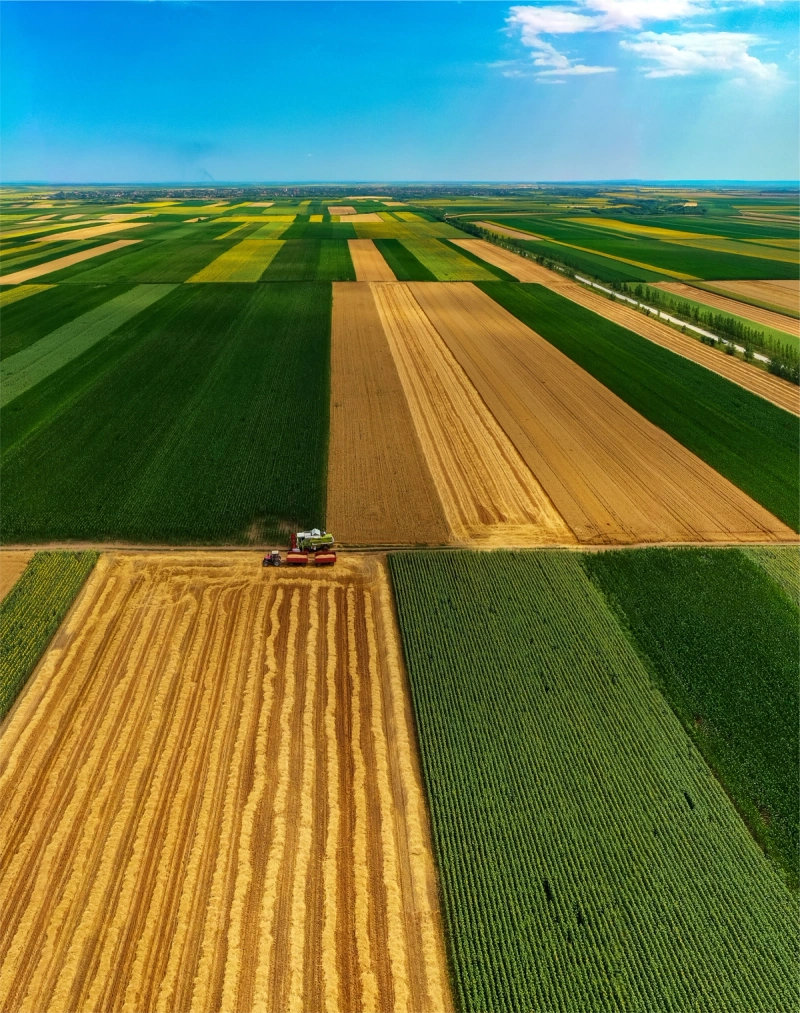
An aerial view of acres of cropland
We Are What We Eat
Did your parents ever tell you, “You are what you eat”? Maybe they were trying to scare you off of that cinnamon roll or guilt you into putting some broccoli on your plate. Whatever it was, the message was clear: What you put in your body affects your health. Turns out, it also affects the health of our planet.
The food and agriculture sector accounts for 20% of global greenhouse gas (GHG) emissions. Two thirds of that comes from crop and livestock activities, while the rest comes from landfills, deforestation, and land use change.
A farmer harvesting a field of crops
But it’s not just the size of agriculture’s emissions that makes it hard to tackle, it’s the source
. The majority of emissions come from GHGs other than carbon dioxide (CO₂) like methane and nitrous oxide, both of which are more potent warming agents than CO₂. Methane warms the atmosphere approximately 28 times more than an equivalent amount of CO₂ over a century. Even worse, nitrous oxide’s global warming potential is about 300 times that of CO₂ over the same time frame.
Other factors also make these sources harder to tackle than CO₂. For example, technology to capture CO₂ in the air is far more advanced than methane or nitrous oxide capture. Methane and nitrous oxide also originate from a variety of natural sources like wetlands, livestock, and rice farming.
Another challenge of decarbonizing the agriculture sector is that agricultural emissions manifest differently around the world. They’re influenced by geography, which determines what crops can grow where, as well as by cultural attitudes toward food production and consumption. In other words, what works in the United States may not work elsewhere, and vice versa.
India, for example, has the largest cattle herd in the world, due to the cultural significance of cows. In Indonesia, deforestation for palm oil can account for more emissions than the nation’s entire energy sector. In Brazil, deforestation and cattle farming account for the majority of emissions. And in the United States, fertilizer application and nitrous oxide lead the emission profile.
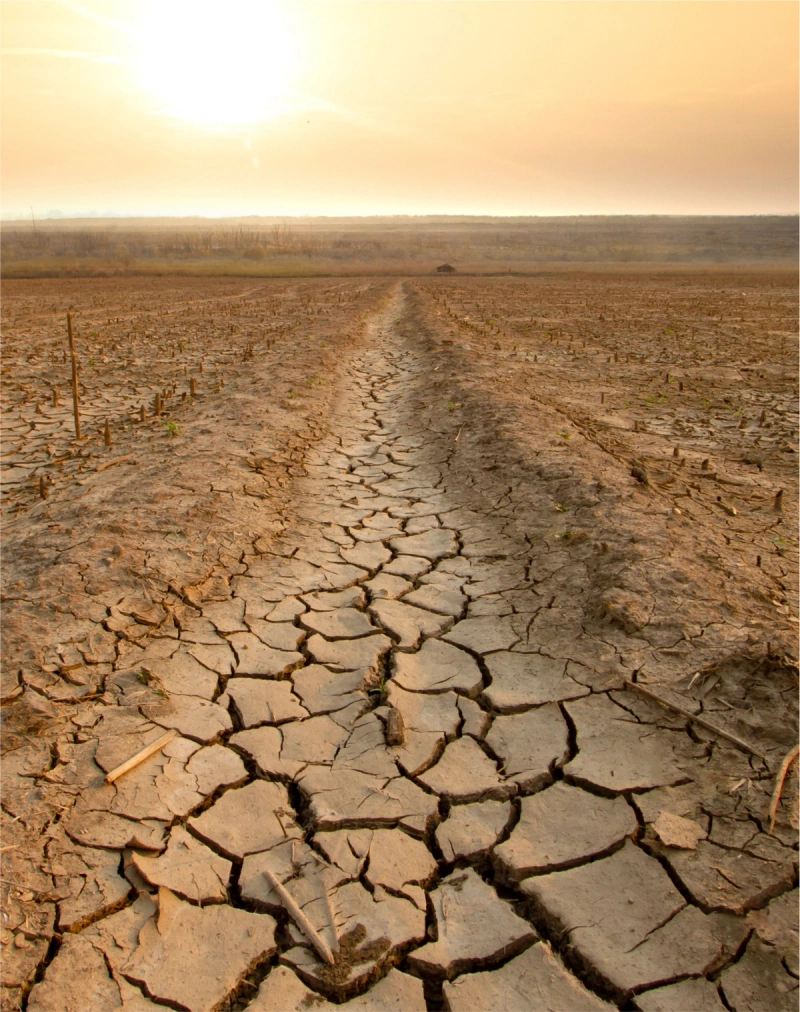
Croplands damaged by severe drought
What’s more, agriculture is arguably the sector most impacted by climate change. This creates a vicious cycle: Climate change has caused lower yields from crops, in turn increasing fertilizer use and deforestation, which raises emissions and exacerbates climate change even further.
Whatever we do, one thing is clear: the status quo is unsustainable. Not only would inaction mean continued increases in emissions, but it would also lead to dire levels of food insecurity, which has already increased dramatically due to climate shocks and supply chain disruptions.
And yet, up to this point, the resources devoted to decarbonizing the agriculture sector simply don’t reflect its outsized impact on climate change. From 2002 to 2019, total public agriculture R&D spending in the United States, which includes federal, state, and private sector funding of public institutions, declined by about a third, largely due to a reduction in state funding. Although the FY2023 bill increased funding for USDA agencies, bringing it close to early 2000s levels, the American Association for the Advancement of Science states that it was still about six percent lower in 2022 compared to 2003, indicating waning state support for public agricultural research.
Other large nations have outpaced the United States. China, the largest importer of U.S. agricultural goods, and Brazil, a major international competitor with the United States in agricultural exports, both increased their agricultural R&D funding over the past two decades. India, another country with a large agricultural sector, has also increased its public R&D spending.
To make matters worse, the two largest sources of emissions in the agricultural sector — enteric methane and synthetic fertilizer — have received disproportionately low levels of research funding.
2014
Over the past year, we've collaborated with climate groups to champion greater funding for several key agricultural programs, including the National Institute of Food and Agriculture, which supports innovations that curb enteric methane emissions without cutting back on beef and dairy outputs; the Agricultural Research Service, another USDA branch, which delivers valuable information to the public on nutrition, food safety, crop protection, conservation, and more; the Foundation for Food and Agriculture Research, a nonprofit established by the 2014 Farm Bill, which ensures that federal funds for agricultural research are matched from private sources; and the Agriculture Advanced Research and Development Authority (AgARDA), which focuses on high-risk, high-reward projects that conventional funding sources overlook but could usher in the next wave of agricultural advancements.
As we advocate to better fund and expand all of these programs, we recognize that the future of agricultural policy in every part of the world must be proactive. Through increased investment, bold incentives for farmers and consumers, and revolutionary innovations in livestock management, fertilizer production, and plant-based alternatives to meat, we can feed the world and mitigate climate change at the same time.
Holy Cow
Tackling Livestock Emissions
2
2
During the COVID-19 pandemic, the race for a vaccine consumed our world. Scientists and innovators put their heads together to find, test, scale, and mass deploy mRNA vaccines to the globe’s nearly eight billion people, one of the greatest feats of ingenuity in human history.
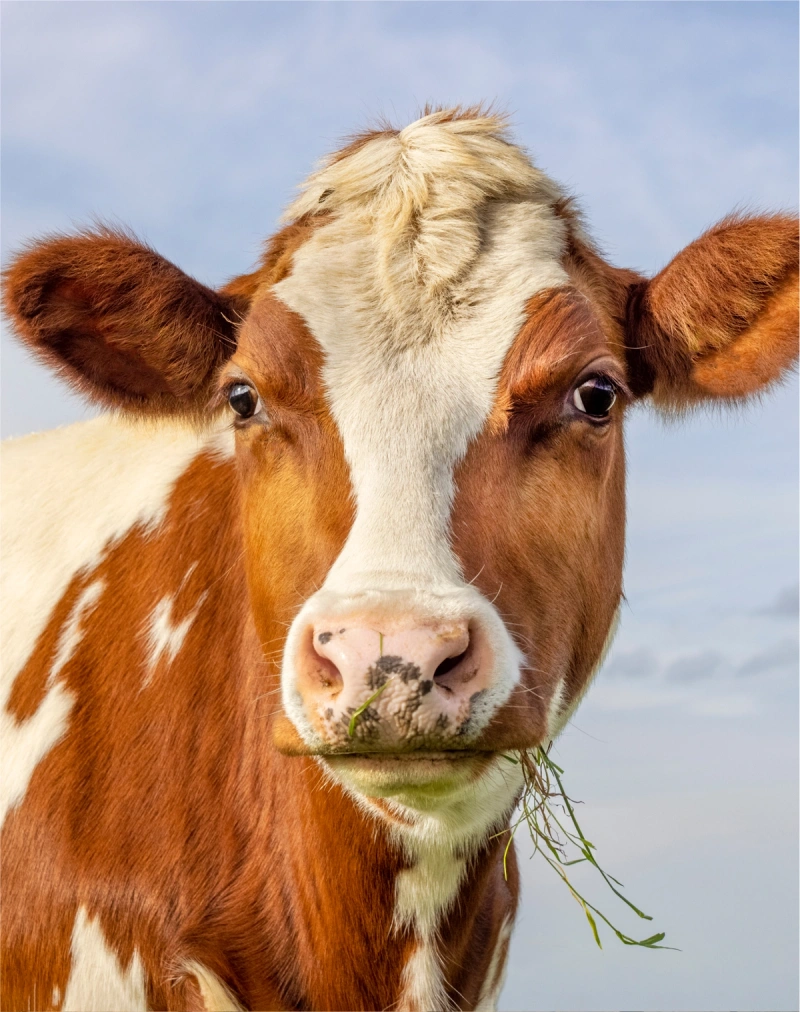
A portrait shot of a cow
What if we told you there could be a "vaccine" for climate change? Well, at least for a big part of it. Let’s explain.
We know burping is impolite. But when it comes from cows, it also imperils our planet. That’s because cows digest food differently than humans do.
ArkeaBio
In a process called enteric fermentation, bacteria inside a cow’s stomach breaks down food, ferments it, and produces methane, which the cow then mostly burps out. Methane is a much stronger warming agent than CO₂, and the methane cows burp and fart out (known as “enteric emissions”) accounts for four percent of global emissions alone.
That’s a serious problem, because cows are a vital part of our global food system. They contribute about 34% of our diet’s protein and 16% of its calories. And as the world’s population and food demand grow, there could be an additional 500 million cows roaming the planet by 2050, according to projections by the United Nations Food and Agriculture Organization.
That’s where the vaccines come in. In fact, the word vaccine is derived from the Latin word for cow. We’ve invested in a company called ArkeaBio , which uses a cutting-edge, multivalent vaccine that delivers antibodies to the rumen, a compartment of the cow’s stomach, to reduce methane production.
There’s a high scientific risk here and it may not work. But it’s hard to overstate the potential impact of this vaccine. We know this technology is highly scalable. Look no further than the massive effort to administer nearly 14 billion COVID-19 vaccines in three years. If successful, ArkeaBio’s vaccine could become one of the most important climate breakthroughs.
Rumin8
Rumin8 , an Australia-based company, is tackling this problem in a different way. In recent years, farmers discovered that bovine methane production can change based on what cattle consume. A seaweed diet, for example, has been shown to significantly reduce the production of methane in cows. Only problem is, transporting seaweed to cow farmers just doesn’t make economic or logistical sense, not to mention the fact that cows just don’t like the salty taste of seaweed very much.
Rumin8 has created a workaround, taking the active ingredient in seaweed and using it to target enzymes in the cow’s stomach to reduce methane production. If ArkeaBio’s technology works like a vaccine, Rumin8’s works more like a probiotic that can be administered in cow feed.
Of course, the simplest way to reduce livestock’s impact on the climate is to stop eating them. But reducing demand for beef has proved harder than we imagined.
Plant-and cell-based alternative meat companies have exploded in recent years, but Americans’ hunger for meat alternatives has plateaued. Plant based meat is still only about one percent of the meat market in the United States. The Green Premium for plant-based beef remains absurdly high, and most surveys show consumers still find the taste lacking. And internationally, beef demand is expected to increase as low- and middle-income countries get wealthier, since per capita meat consumption is strongly correlated with per capita GDP.
Nature's Fynd has produced a new-to-the-world protein
That doesn’t mean we should give up. Breakthrough Energy is working with several companies focused on accelerating the adoption of plant-based alternatives to meat. Take Savor , for example, which creates zero-carbon fats using a thermochemical process. Most fat used today comes from palm oil, which is in nearly half of all packaged goods, and which, as we’ve discussed, is a major driver of deforestation. Fat is critical to a food’s flavor and texture. If companies like Savor can improve the way we make plant-based meats by replacing palm oil and animal fats, it could help shift consumer preferences and significantly reduce emissions.
Nobell is another company working in this space. Founded by a Lebanese immigrant looking for better vegan cheese, Nobell helps farmers create dairy-free products using soybeans to grow the dairy protein casein, which gives cheese its gooey texture.
Accelerating consumer adoption of plant-based alternatives would have a cascading effect on emission reduction. Not only would it help reduce the emissions from livestock themselves, but it would also free up land currently used for livestock feed such as corn and soy.
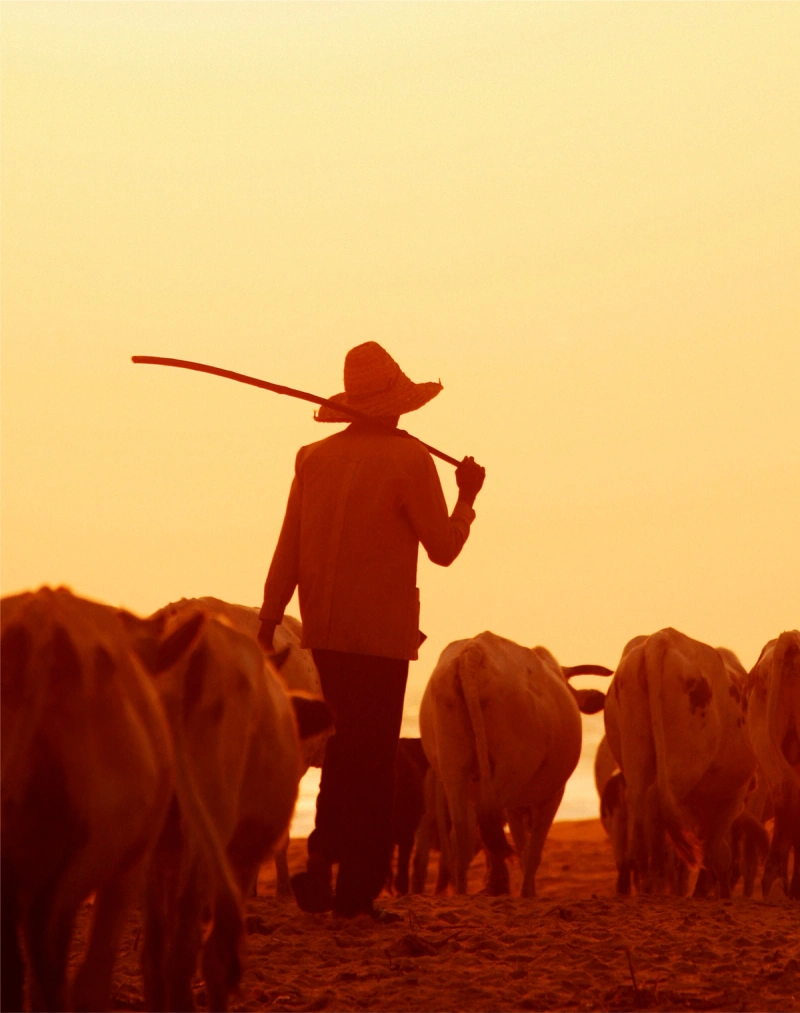
A farmer herding cattle
However, even if the plant-based alternative market continues to grow, we could still have more cows on Earth by 2050 than we do today. That means we need to focus our efforts on decarbonizing the world’s cattle herd and other livestock.
Policy can play a critical role here by incentivizing the uptake of new and innovative approaches that improve animal nutrition and feed efficiency. It can also accelerate the adoption of new practices, like ArkeaBio’s vaccine.
But tackling methane emissions from livestock requires a nuanced approach, given the pivotal role livestock play in global nutrition and economies. Livestock, particularly dairy, is a lifeline for about a billion people worldwide, providing sustenance and economic stability.
We need to approach this challenge with farmer-centric innovations in feeding, manure management, and general farming practices. Moreover, we need to streamline regulatory standards for methane-reducing products. Investments in these areas will not only mitigate methane emissions but also support farmers in adopting sustainable practices.
Feritilize This
Sustainable Crop Production
3
3
Meat isn’t the only farming activity contributing to or being impacted by climate change. After livestock, deforestation and land-use change account for the largest source of agricultural emissions.
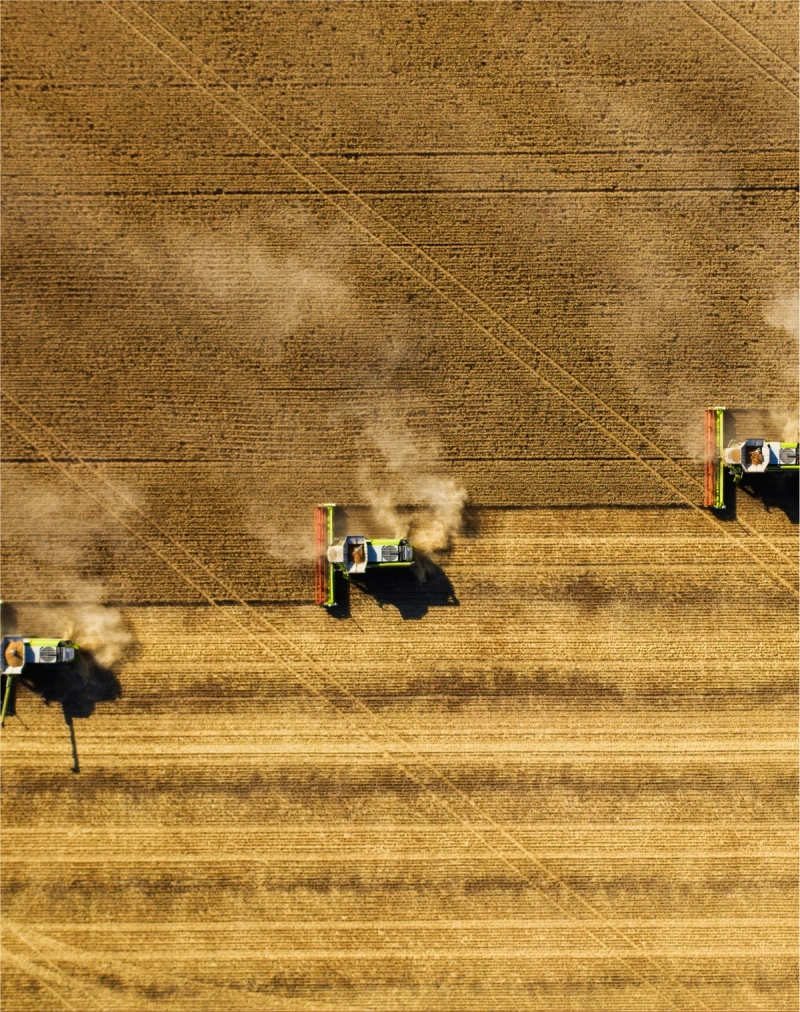
An aerial view of croplands
Feeding the world is a tall order, and climate change has only made things harder. At our current crop yield rates, we will need an additional 500 million acres of cropland — the size of Argentina — by 2050 to meet rising demand for food. That’s going to be a huge driver of deforestation and, in turn, emissions
To address these challenges, we must seek innovative solutions that reduce emissions, increase crop yields, enhance resource efficiency, and build climate resilience.
The best way to reduce deforestation while still meeting rising food demand is to improve the amount of food we produce per acre. That starts with tackling the emissions and inefficiencies of the most important product farmers use to grow their crops: synthetic fertilizer.

An aerial view of crop fields
Farmers use synthetic fertilizer to provide their crops with nitrogen, an indispensable element for life on Earth. The more nitrogen crops have, the more they grow, the greater a farmer’s yield. But this process is having serious effects on our environment — from air and water quality to human health and ozone-depletion.
Synthetic fertilizer production accounts for approximately two percent of the world’s energy use and contributes to one percent of its GHG emissions.
N₂O
Nitrous oxide is the toxic byproduct of nitrogen fertilizers. You may know nitrous oxide as laughing gas, but in the context of climate change, there’s nothing funny about it. Nitrous oxide is nearly 300 times more potent than CO2 and is now the world’s dominant ozone depleting substance.
Then there are the geopolitical concerns , as the majority of nitrogen production comes from the Middle East, China, and Russia, where we’ve seen conflict significantly disrupt the nitrogen supply chain. Before the Russian invasion, Ukraine was a crucial agricultural trade partner to the European Union, supplying significant shares of animal, vegetable oils, and cereal crops. Additionally, the European Union relies significantly on Russian imports of ammonia and urea, both processed forms of natural gas, for fertilizer production. This disruption has caused food and natural gas prices to skyrocket throughout Europe and other parts of the world.

A tractor spreading fertilizer
Nitrogen fertilizer is also remarkably inefficient. About 50% of nitrogen fertilizer applied to soils is actually lost to the environment.
If we can manage nitrogen more efficiently by delivering it to crops with less energy, emissions, and run-off, we can enhance food security and reduce our dependence on imports.
One of the most promising strategies comes from Pivot Bio , a California-based company that uses nitrogen-fixing bacteria to give plants the ammonia they need to grow. Pivot Bio uses microbes in the soil to create a symbiotic relationship with the roots of crops. The microbes consume root exudates, a sugar product expelled by the crop, which gives them the energy they need to convert hydrogen from the air into ammonia.
Pivot Bio is transforming fertilizer
This process could displace the need for synthetic fertilizer entirely, providing more or less nitrogen to the crop as needed without washing away during severe weather. Unlike current methods of producing ammonia, the energy source for this process comes at no cost. In other words, these microbes create a built-in fertilizer factory in the soil.

An ammonia production plant
ReMo Energy goes after a different part of the fertilizer process: production. In order to make synthetic fertilizer, we have to produce ammonia. A critical step in this process is converting natural gas to hydrogen, known as the “water-gas shift reaction,” which produces GHGs.
ReMo is developing ammonia plants fueled by renewable electricity to deliver nitrogen fertilizer at prices competitive with natural gas-fueled supplies.
The renewable electricity is used to run electrolyzers that make hydrogen from water rather than from CO₂. This process works especially well in the American Midwest, where we see both high ammonia demand and abundant renewable electricity.
We can incentivize better practices through policy, such as offering reduced crop insurance rates for sustainable nutrient management or subsidies to counter potential yield reductions.
A decarbonization roadmap, developed in partnership with experts, could also guide stakeholders towards a climate-conscious fertilizer industry that reduces emissions and ensures a sustainable future.
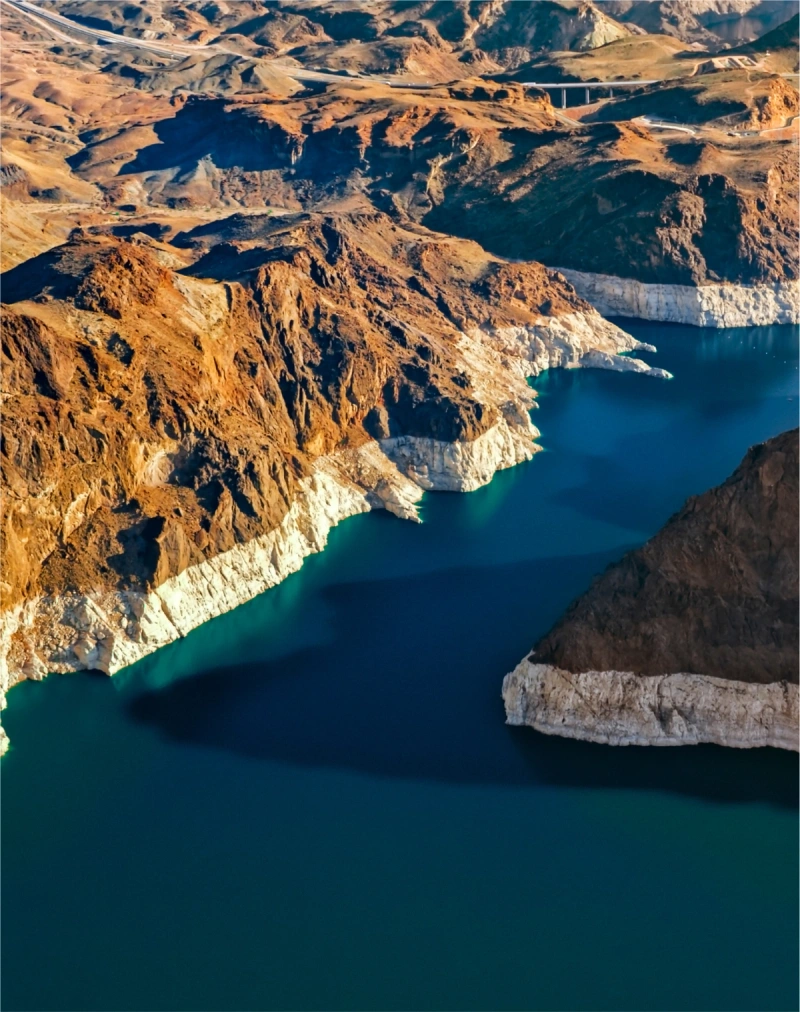
The Colorado River, which is currently experiencing a severe drought
But the agriculture sector’s reliance on nitrogen isn’t its only problem. It’s also using up water at an unsustainable rate.
In the American Southwest, which is experiencing a severe drought, 55% of the Colorado River’s water is used for cattle feed. And in Southeast Asia, water demand is heavily driven by rice irrigation; in India, for example, over 60% of water demand comes from rice fields. Growing rice in flooded fields contributes significantly to global methane emissions; in fact, rice is the world’s most greenhouse gas-intensive crop on a per acre basis.
It’s also not going anywhere. Just as meat is a vital part of American food culture, rice is a critical component of diets in Southeast Asia and many other parts of the world. And by 2050, rice demand is expected to increase 50%.
That’s why water resiliency has become critical to sustainability efforts, not only to ensure food security but to reduce the emissions that come from excessive water use.
To accelerate low water-use, low-methane rice cultivation technologies, Breakthrough Energy co-founded Rize . Rize works with rice growers to accelerate the adoption of a water-saving irrigation technique called Alternate Wetting and Drying (AWD).
Using what’s called a piezometer to measure water levels, farmers can optimize water usage for rice by alternating between cycles of wetting and drying, reducing their water consumption by roughly 30% and methane emissions as well as by producing more with less, we can spare the need for land clearing to feed a growing, more affluent population.
How We Get Around
Future of Zero-Carbon
Transportation
If you only have brain space for three things
Electric Vehicles (EVs) have come a long way. They are now roughly as cheap and can travel just as far as regular cars. And by 2035, some projections show they could account for half of the new vehicles sold in the United States.
The minerals that power batteries are in jeopardy. Not only are we potentially running out of some of them, but most of the world’s current lithium, cobalt, and nickel production is concentrated in just a few places, meaning conflict or natural disaster could cause significant supply disruptions.
Going forward, long-distance and heavy-duty transportation will be the biggest technological hurdle. We need better public and private collaboration not only to incentivize the uptake of batteries and e-fuels but to improve their performance, endurance, and affordability.
Scroll to navigate to
next section
Click to navigate to
next section
